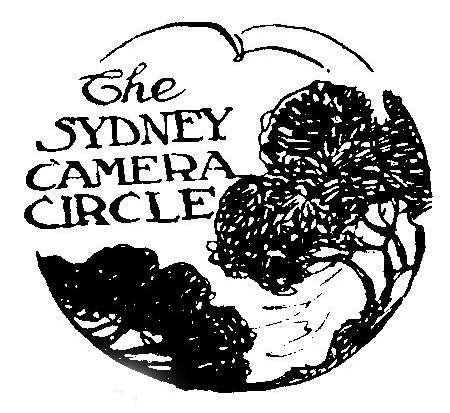
WILLIAM HEATH MOFFITT
DOB 1888 - 1948
William Heath Moffitt was born in Sydney and trained as a solicitor, later becoming a partner in the firm McDonell & Moffitt. He took up photography around 1920 and joined the Sydney Camera Circle in 1927.
In the 1930s Moffitt developed a distinctive, very graphic style of bromoiling probably using a series of paper negatives to reduce the image to a flat pattern of shape and line.
In August 1947 Moffitt wrote his only article on photography, “The Status of Pictorial Photography”, in which he defended the pictorialists right to use such processes as bromoil to achieve an artistic effect.
Above text based on Gael Newton's Silver & Grey Angus and Robertson, Australia 1980.
THE STATUS OF PICTORIAL PHOTOGRAPHY
WILLIAM HEATH MOFFITT
THE ARGUMENT:
Photography is not adapted, nor is it, generally speaking, adaptable, to the production of pictures having the quality of fine art. This bald assertion, of course, raises an old controversy, but with some emphasis on the words “generally speaking”, represents my own conviction.
I have set out what follows at your Editor’s request. Not much of it is original, but it is a marshaling of the reasons in support of the assertion that have appealed to me.
“REPRESENTATIVE” AND “ABSTRACT” ART:
Before I read the book I saw the following quoted in the press from Orpen’s “Outline of Art” — words which occur after he has pointed out that down to the close of the 19th century, painters strove after the more perfect representation of natural forms:
“During that century two causes contributed to change the direction of painting. One was the invention of photography which set painters wondering what part the representative element really played in a picture; the other was the new color science of the impressionists, who seemed to have pushed truth of representation to a point where further developments were impossible. ... A new generation began to argue that after all painting was not a science but an art and that its primary function was not the accurate representation of nature, but an expression of an emotion. A fresh start was made in a new direction. Emphasis was now to be laid on expressing an idea rather than on rendering appearances and it was held that by reducing the facts of phenomena to a minimum, the idea might be able to shine forth more brightly”.
Whatever you make of the last part of this quotation, the passage as a whole serves to suggest the difference between representative and abstract art. The one is primarily concerned with the depiction of concrete objects, the other with the pictorial expression of an idea. Pictorially, the photographer is, generally speaking, chained to the negative. The negative is a literal and matter-of-fact record of a concrete subject. Pictorial photography must be representative in character.
Now representative art, whilst primarily concerned with concrete objects, is also concerned that they shall be so grouped and presented as to display beauty of form and texture, rhythm, light, perspective, grandeur, infinity, intimacy, mood and atmosphere; and with doing this in the most convincing way, and in the most harmonious and purposeful relation, so that the picture shall have unity of structure and nobility of character. A representative work of art is far from being a merely literal and matter-of-fact record of haphazardly selected objects. The fact that photography is necessarily representative and can never be a medium of “abstract” art, is not of course a limitation that of itself would ban the pictorial photograph from the category of a work of art. But, unfortunately, this does not constitute its main limitation as a means of artistic expression, for within this limitation are at least two others.
PHOTOGRAPHY'S LIMITATIONS:
1. Whereas the artist of the brush or pencil may control the shape and relation of the parts of his subject, and may combine and eliminate at wall, and may even combine sky and lighting effects in possible but rarely seen unities, the pictorial photographer is able to exercise such control and licence in a very minor degree.
2. The technique, by which the non photographic artist may produce singularly characteristic effects is widely variable, not only from breath to precision, but in mannerisms which permit of greatly differing individual treatment, so that the work of almost any well-known artist can be distinguished by this alone. Very much of the success of the picture as a work of art is bound up with the artist’s technique. But with the largest proportion of “pictorial photographs”, those, that is, that which presumably claim to be in a measure works of art, the technique of producing both the negative and the print is a matter of automatic processing—resulting in that characteristically uniform appearance known as “photographic quality”.
SELECTION OR ARRANGEMENT:
What can be done to minimize these imitations? As to the first, the great importance of selection or arrangement of subject matter before exposure is obvious. The landscapist must encourage his eyes to see photographically, and the faculty of doing so is usually the result of long practice in the appreciation, selection and adaptation of lines, masses and other features that will compose satisfactorily within the four corners of the negative-to-be; in seeking and holding lighting effects and color values that will give requisite emphasis, and that will translate into an effective chiaroscuro. A higher or lower viewpoint, one nearer or more distant, more to one side or the other may work wonders in gathering the best “layout”, or co-ordination of subject matter.
Even slight variation in some of these may make or mar the result. The mood of a particular time of day, an effect of light, a cloud form, atmospheric conditions, the grouping of living and inanimate objects, transient shadows and gleams, must be seen and quickly judged and appreciated in relation to the kind of negative that would result from an exposure.
Analogous of course are the preparations of the portraitist and the still-life photographer. These are more under control and offer more scope for the creation of effect, as distinct from seeking out the subject and appreciating it when found; yet quite a lot can be done towards making a landscape “pose” for its photograph! (In one aspect, but this is rather interpretative than creative, but there is scope in it surely for much individuality. It calls for far more than simple appreciation of beauty, and is in some degree creative. “There is creative reading as well as creative writing”).
TECHNIQUE AND CONTROL:
The second of these limitations before mentioned I regard far more seriously than the first. “Photographic quality” — that characteristic quality of meticulously impartial gradation of tone, non-selective attention to detail, want of emphasis, uniformity of texture, meaningless, monotonous, and obtrusive all overishness — is found not only in ordinary photographs, but also in “pictorial” photographs, and obviously labels them the result of automatic and mechanical processes. A picture that is machine made cannot, of course, be a work of art, for the automatic and the mechanical are antithetical to art.
Most media of graphic expression involve the use of tools, not mechanism and this in itself is suggestive. Some (e.g. etching) are in part mechanically controlled, but the mechanism is itself flexible; just as, in the sphere of music, the pipe organ, at once a most complex and comparatively rigid instrument, is so amenable to ingenious controls that, taken with the instrument’s vast range of power and color, and the beauty of its “timbre”, it is capable of renderings that transcend all that is mechanical.
The camera and the ordinary printing processes, however, of all means for graphic expression, are the most limited and the least flexible and controllable. Subject only to selection and pre-arrangement, and to what is possible by various artifices, the whole of the technique is automatic, and the result is a dead body instead of a live and vital thing. There may be a few exceptions, but I suggest that in landscape, at any rate, they would be confined to those miraculous co-ordinations of pictorial subject matter and lighting, when everything is “just right”, when, as it were, “the time, the place, and the loved one” were “all together”. Such exceptional prints are in a sense fraudulent in that they give some appearance of purposeful treatment when they are almost entirely fortuitous. The author may claim the credit for having seen and photo graphed what was there, but all the technique thenceforward was mechanical. Obviously such exceptions prove the rule, for they are no testimonial to photography as a means of artistic expression.
On the whole, one is forced to admit that the use of the word “photographic” as a term of contemptuous reference in relation to a work of art is justifiable, even when the achievements of pictorial photography are borne in mind, for 95 per cent, of the exhibited works evidence the limitations and defects with which I have been dealing.
On this matter of “photographic quality”, since in some quarters it is praised, I might quote Mr. Paul L. Anderson, an American critic and pictoralist who once said that, in evaluating a pictorial photograph, we should ask ourselves among other questions this one: “Has the artist availed himself fully of the camera’s incomparable power of rendering the graduations {sic) of light on surfaces, or has he thrown this away in order to do something which could have been done better in some other medium”.
GRADATION: in relation to art has been defined as “a regular arrangement or subordination of the different parts of a work of art” (Worcester’s Dictionary). This definition implies something purposeful, but Mr. Anderson seems to use the word as synonymous with “photographic quality”, that very different and mechanically produced thing which, for the reasons given, I would always, if possible, “throw away” in essaying a pictorial photograph. I do not deny to this quality a certain pleasurable aspect and it is, of course, appropriate if not essential to an ordinary good photograph which does not pretend to be anything else; but I think the pleasure is a meretricious one derived from a sense of the perfection of the automatic processes when set in motion and carefully applied to graphic reproduction. To use Ruskin’s terminology, it is, I think, due to the perception partly of an “idea of power” and partly of an “idea of imitation”, but the power is that of the machine and imitation, ranked lowest by Ruskin, is mere literalism and its contribution to this pleasure is a tickling of the mind in remarking the exactness of the reproduction. Such pleasure has little to do with art. The quality that produces it is tinsel, and in a pictorial photograph is destructive and effectively “wet blankets” nearly all suggestion of vision and purpose, so that whatever of inspiration may have been conceived by the photographer when he selected the subject is usually still-born.
A sub-conscious appreciation of this is, I believe, at the root of much of the craze for “stunting” — photographing things from unnatural and impossible angles, using crude lighting effects, anything to get away from the conventional and monotonous renderings usually given by the camera and ordinary processing. In other words, “stunting” is due to frustration in the attempt at individual expression by photographic means.
Alternatively it may be a deliberate embracing of the mechanistic, an exploiting of it to the utmost with robot-like efficiency. Striking and wonderful the results may be, but, emphatically, not of such is the kingdom of art.
In order to avoid “photographic quality”, the pictorial photographer must eschew the ordinary processes, in particular the almost ubiquitous bromide and seek a process that will enable him to make his pictures look quite unlike photographs — for that is what it comes to — and something like works of art, to give some impress of his individuality, to transcend mere literalism; a process that will permit of emphasis and suppression, selective and varied treatment of tone and detail, even considerable addition and subtraction and all this without destroying the homogeneity (a very different thing from smooth uniformity) of the prints texture; that will render unnecessary and abhorrent those crude, clumsy and inadequate artifices for modifying the straight print from the negative; in a word a process that will readily permit of that high degree of enhancement or idealization that will make the structure of the picture as formed in the negative come alive.
These facilities are offered in a high degree by oil pigment processes. So flexible are these that the photographer does not so much remain chained to the negative, as use it, or a straight print from it, as the structure around which he may build his idealized picture. The nature of the control available is inherent in and natural to the normal process of applying and removing pigment and is so extensive and the textures obtainable are so potentially beautiful, that now and then the worker can hold his “inspiration” — if he has really been inspired. To be quite honest though, do not most of us in spite of our experience in the field, resemble the robust lady of the limerick who “never knew what on her fork she had got, till she got it right up to her eyes”? In fact, even when we examine the negative we have difficulty in deciding what we really want to get out of it, and for my own part I often find it hard to decide what I am after until in the course of building up the pigment the idea for the finished picture is suggested, for my imagination needs a lot of prompting. But it is a merit, I think, not a weakness of the medium, that one can play around with the brush trying this and that till an inspiration comes, though this is not nearly so noble as beginning with a knowledge of what you want and working steadily towards it. (You must, however, know what you are after before you finish! The reputation of the pigment processes has sadly suffered because of those who, leaving the protection of the rigidly automatic processes, flounder about without knowing what to aim for or how to stop. So far from being a reflection on oil pigment as a medium, does not the fact that this is so, emphasize the rigidity and the mechanical nature of the ordinary processes in that they can and often do conceal an unsound judgment). Always and at least the competent worker can avoid the deadness of photographic quality; at best, pictures can be produced that, though not of course great art, are yet artistically sound and entitled to be called works of art. Oil pigment presents the paradox of a genuine photographic process by which prints without photographic quality may be quite normally produced. It is not, of course, easy — Robert Demachy, the famous French exponent of work in this medium, said it was a study for a lifetime — but it is fascinating, and a measure of success is obtainable from the start. Broadly speaking, it seems to me that oil pigment in capable hands offers the only chance of raising pictorial photography to a status in the realm of art.
(In this business of enhancement and idealization, by means of the technique of oil pigment there is, also, I feel, much that is creative, though not in a high degree).
In what I have written I have had landscape foremost in my mind, for I personally have concentrated on that. In portraiture and still life, whilst “photographic quality” is perhaps more in evidence in prints by ordinary processes than in landscape, yet I think it must be admitted that the exceptions referred to earlier are more frequent and less fortuitous — or to put it the other way around, “photographic quality” generally speaking seems less inappropriate to an artistic rendering than in landscape. Still, tonal work in any monochromatic medium easily tends to heaviness. Photographic work apart, most graphic work in monochrome is, I fancy, linear, not tonal {e.g., etching and pencil drawing). In tonal processes such as mezzotint and aquatint, the design is usually simple and tonally conceived; insignificant shades of gradation are avoided, and there is no irrelevance of tone. Thus strength, character and vitality are achieved and the tendency is overcome. And when I think of portraits in pigment by men like Demachy, Puyo (mostly genre), Vogelsang, Ortiz Echague and others, I yield nothing of my contention that “photographic quality” is almost always to be avoided, for I realize that a large proportion of portraits and still-life work rendered by ordinary processes suffers in a mental comparison with what might have been in pigment. That “lift” and enhancement, so difficult by ordinary processes, is still called for.
Some of my own prints, for example “Dry Weather”, and to a lesser extent “Rotting Hulks” and “Closing Time”, where (the subjects lending themselves to it) I have emphasized line and simplified tone, have been criticized as being neither fish nor fowl nor good red herring; neither etching nor photograph, things which Mr. Anderson would say might have been much better done in etching or pencil. Quite likely etchings or drawings of the same subjects might have been artistically superior, but if so that is not necessarily to condemn pigment, but only my own inferior artistry. There may be perhaps very few photographs, whether in pigment or not, that an eminent artist of the brush or pencil could not excel if presenting the same subject matter, but the discrepancy need not be so marked, and it might even be non-existent, in the case of competent work in oil pigment. Actually the resemblance of the specific prints mentioned to etchings is purely superficial if, indeed, it exists. They were not meant to look like etchings and except for linear emphasis and marginal softening, which are surely legitimate if pleasing, I don’t think they do; but they were meant to look unlike photographs. They purposely throw overboard “the camera’s incomparable power” of rendering those “graduations” Mr. Anderson referred to, and which I take to be synonymous with “photographic quality”. They are examples, certainly not outstanding ones, of one mode of treatment to which pigment work naturally and readily lends itself by the simple expedient of strongly inking the lines when the print is just surface dried after soaking, “sweeping” the lighter tones, and only lightly bringing them back in a flat rendering when the print is drying off. However, the criticism even does suggest something of a dilemma, if one agrees with my contention that the genius of photography is, generally speaking, foreign to art. The dilemma may be stated thus: “Will you adhere to the production of prints with photographic quality and abandon the effort to produce pictures that may justly rank as works of art — or will you make the attempt in oil pigment (or any of the less practised control methods) to be told that what you are trying to do is
(a) not only to produce a hybrid but,
[b) to waste your time because what you are aiming at can be done much better in one of the recognized art media.
For my part I would shun “photographic quality”. Rather than submit to it I would give up trying to produce pictures by photographic means. (I would, perhaps, make some more or less pictorial records, and might even develop and print them myself - that’s quite good fun!)
I would not be concerned at the accusation of resorting to a hybrid process. Many of our loveliest flowers are hybrids and there are graphic precedents. Turner, I believed, mingled oil and watercolor and there is etching cum aquatint. Nevertheless, I deny that oil pigment is a hybrid; it is a natural adaptation of photographic processes that breaks the fetters of the mechanical and gives the worker wings, albeit more like a sparrow’s than an eagle’s.
I have already given my view of oil pigment at its best. I would add that pictures by that process may possess not only an aesthetically satisfying, but an unique quality of artistic achievement that (always within the limits of representational art) can rank with quite high quality work in other accepted monochrome media. Unfortunately, it has not been practised much of recent years by pictorial photographers, but I believe it will yet find its true place.
ADDENDUM:
Though this is beside the point of the argument, it should, I think, be stated that whilst opinions may differ about whether pictorial photography, within its limitations, has attained the status of art (or can ever hope to attain), there can hardly be two opinions as to whether or not it is worthwhile. The great majority of pictorial photographers can probably neither draw nor paint, but in varying degree have reached some appreciation of the ingredients that go to make up a work of graphic art. Most of us have reached this appreciation after a long and arduous pursuit in which the captures were comparatively worthless; but the pursuit itself has developed critical judgment and soundness of perception, again, of course, in varying degree. And in pictorial photography we find the only means of expressing what we see. Our greatest asset is our “insight” thus acquired. It is mainly analytic, we cannot synthesize and were we not in possession of the means of carrying away a literal memento of the external appearance of that which we have “seen into,” it would remain a vague and fading memory which we could never reproduce; and if you can’t reproduce what you have “seen into,” you lose incentive. The task is to try to produce from this memento something in graphic form that will suggest convincingly the spirit of what we saw. I do not think anyone will deny that the cumulative cultural effect of this pursuit, though unassessable, must be considerable.
PICTORIAL BROMOILS
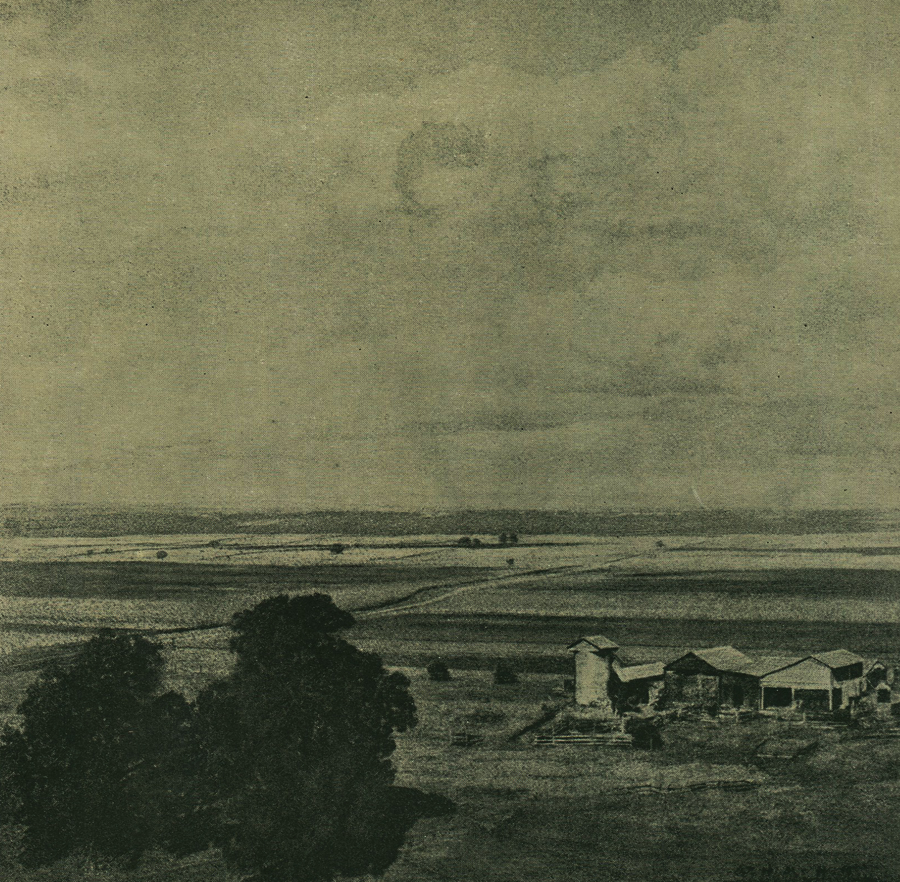
LANDSCAPE NEAR RICHMOND
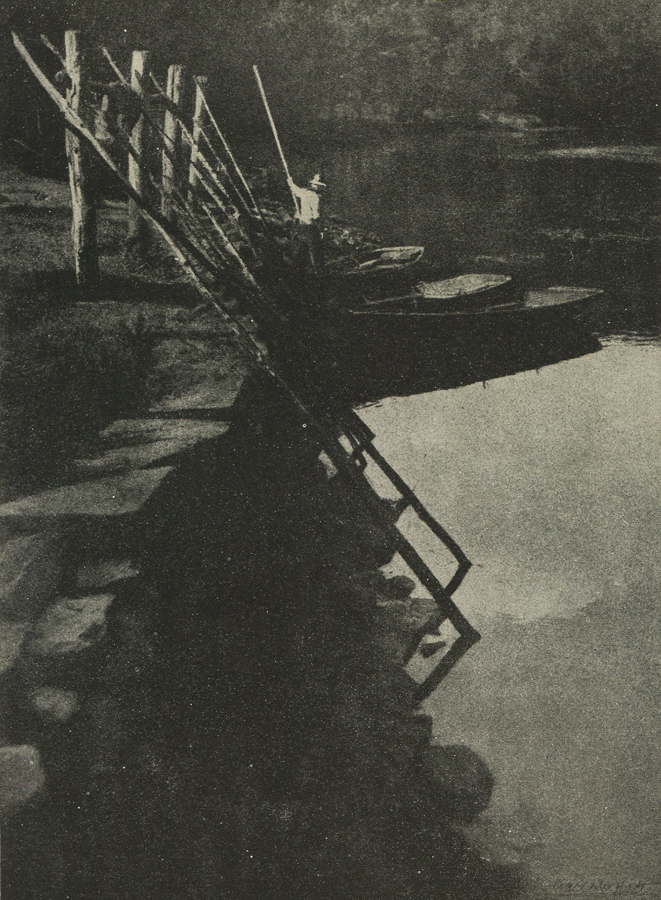
BEROWRA CREEK
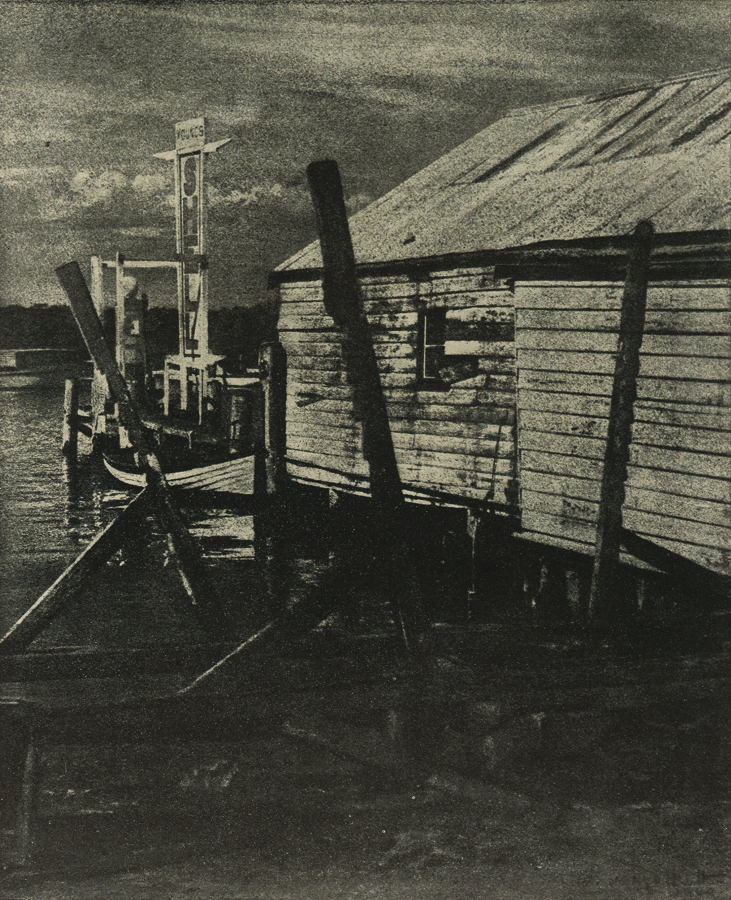
THE SIDE OF THE BOATSHED
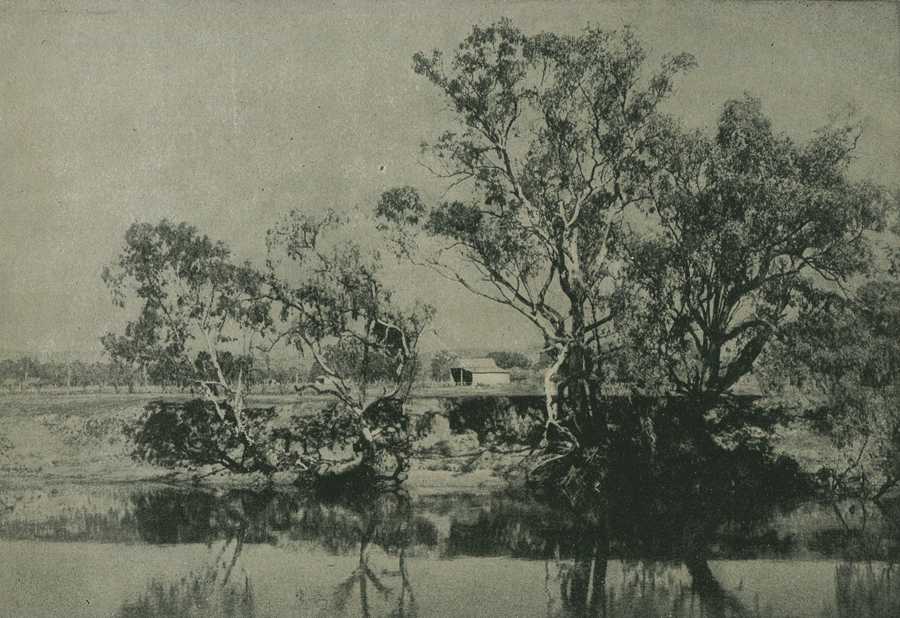
RIVER BANK, ALBURY
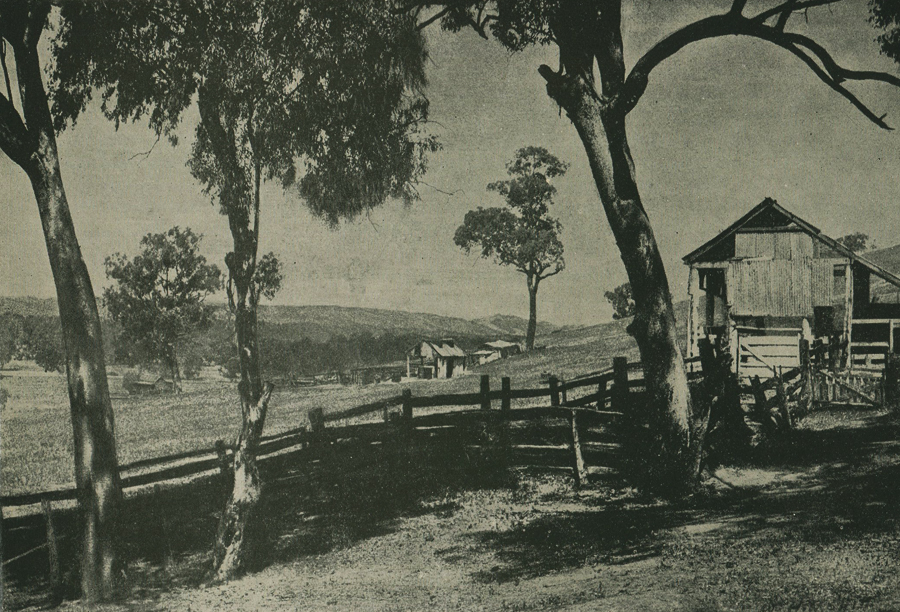
LANDSCAPE WITH SHEDS
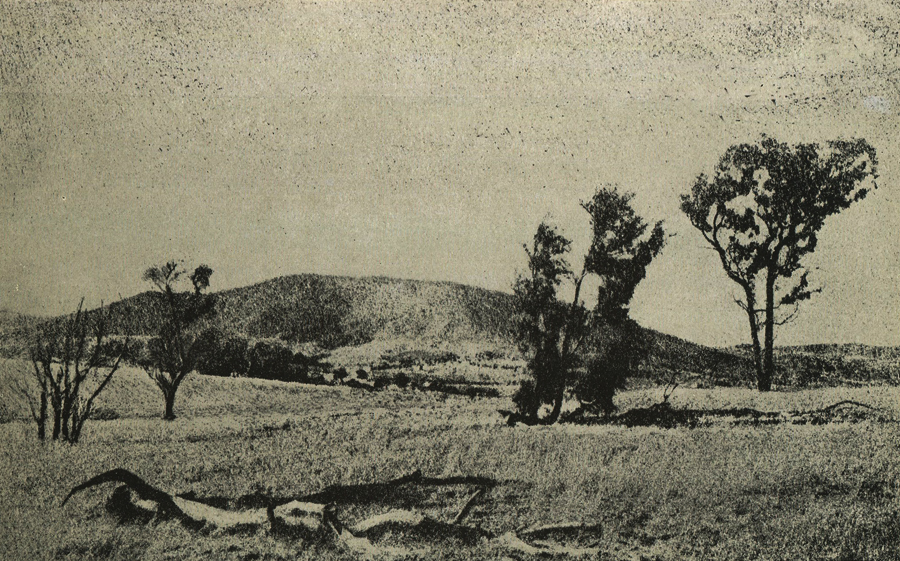
LANDSCAPE, TARANA
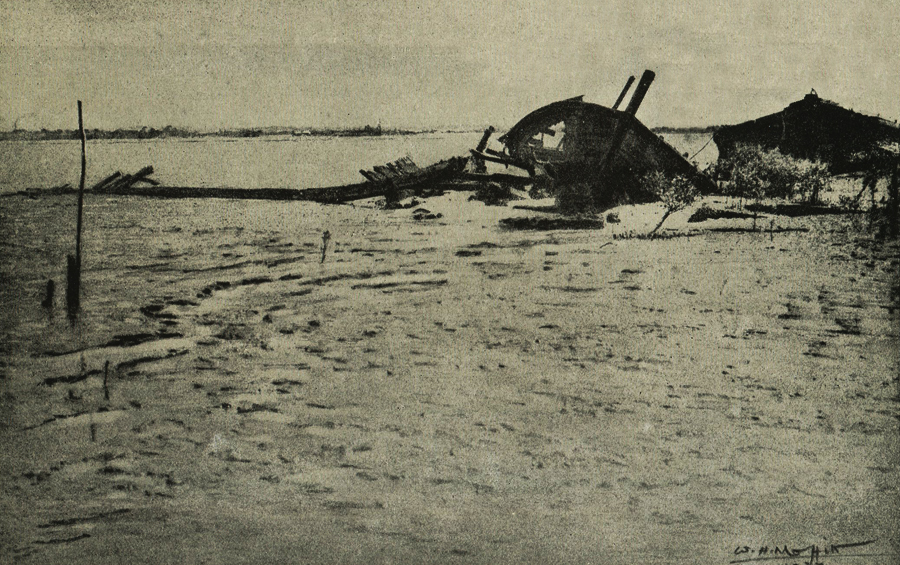
ROTTING HULKS, HUNTER ESTUARY
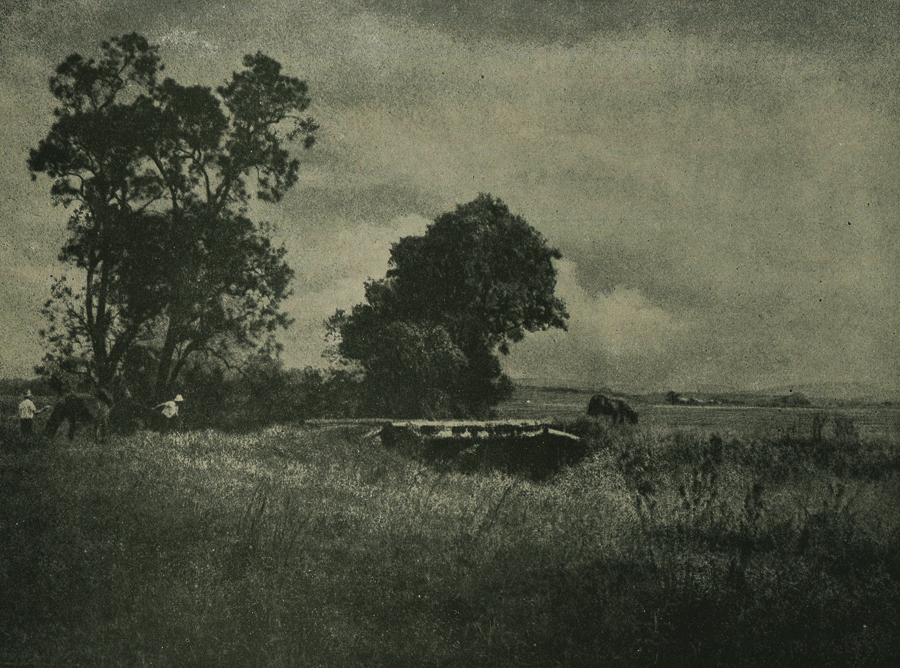
MEADOWS NEAR MORPETH
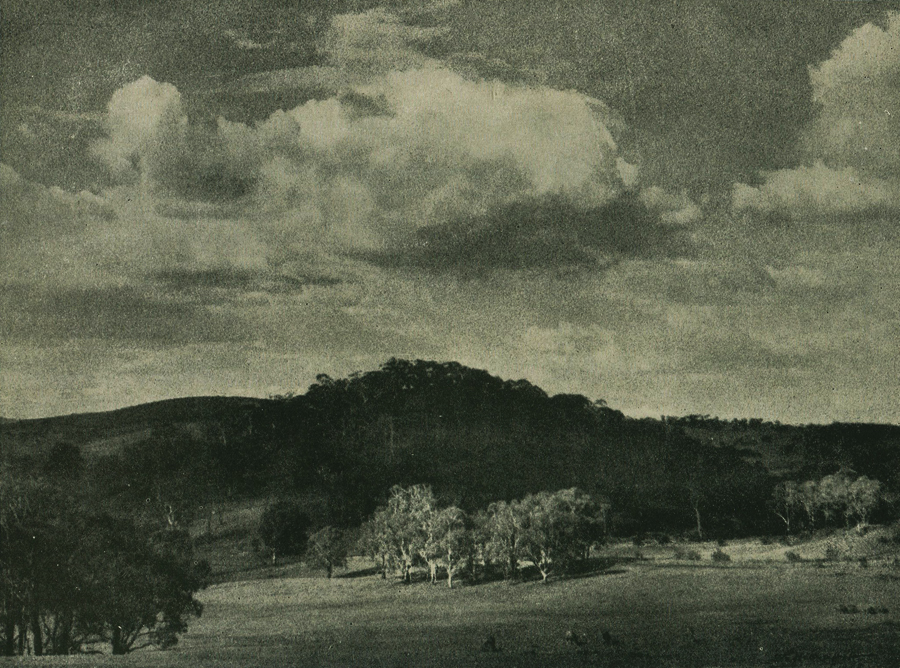
SHADOWED HILL, ORANGE
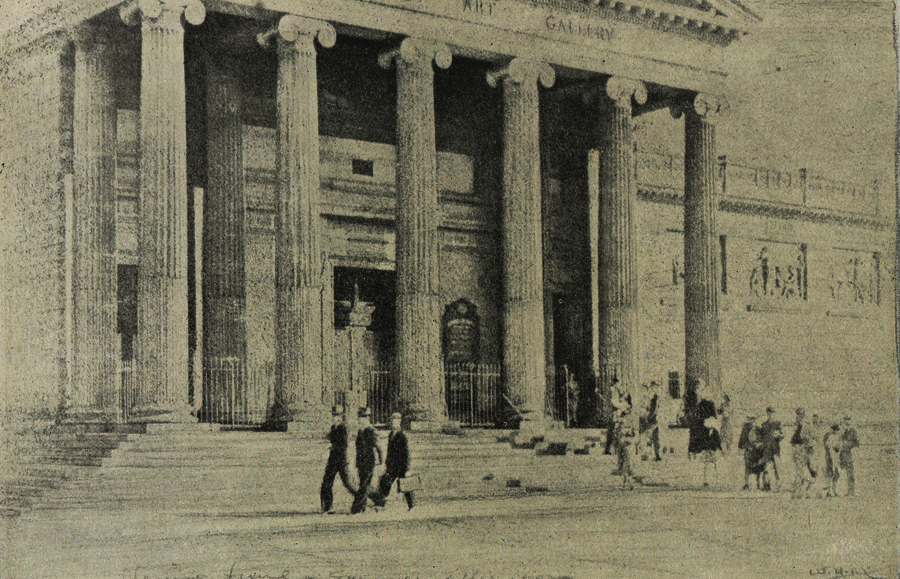
CLOSING TIME
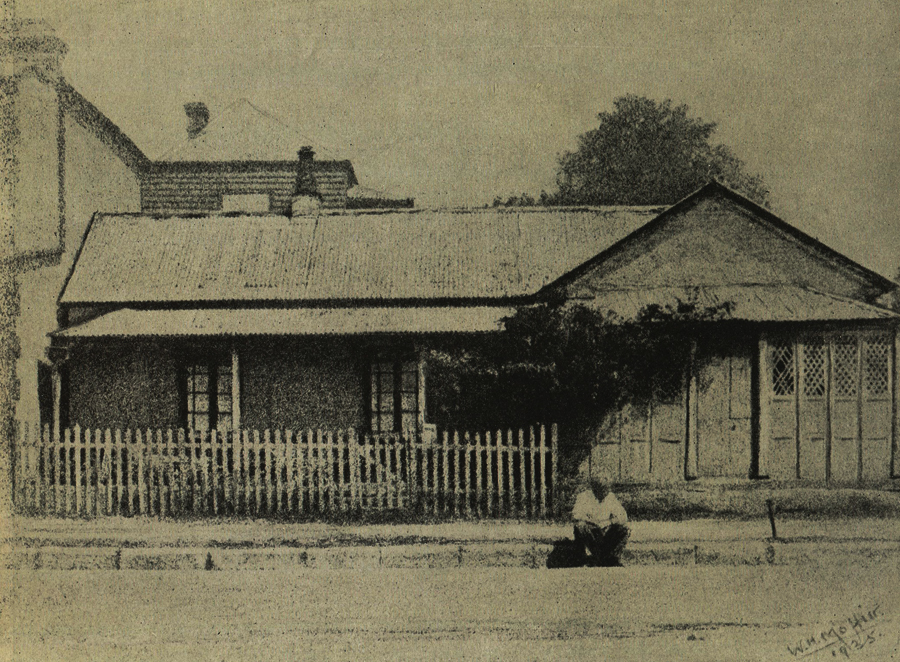
OLD COTTAGE, MORPETH

DRY WEATHER